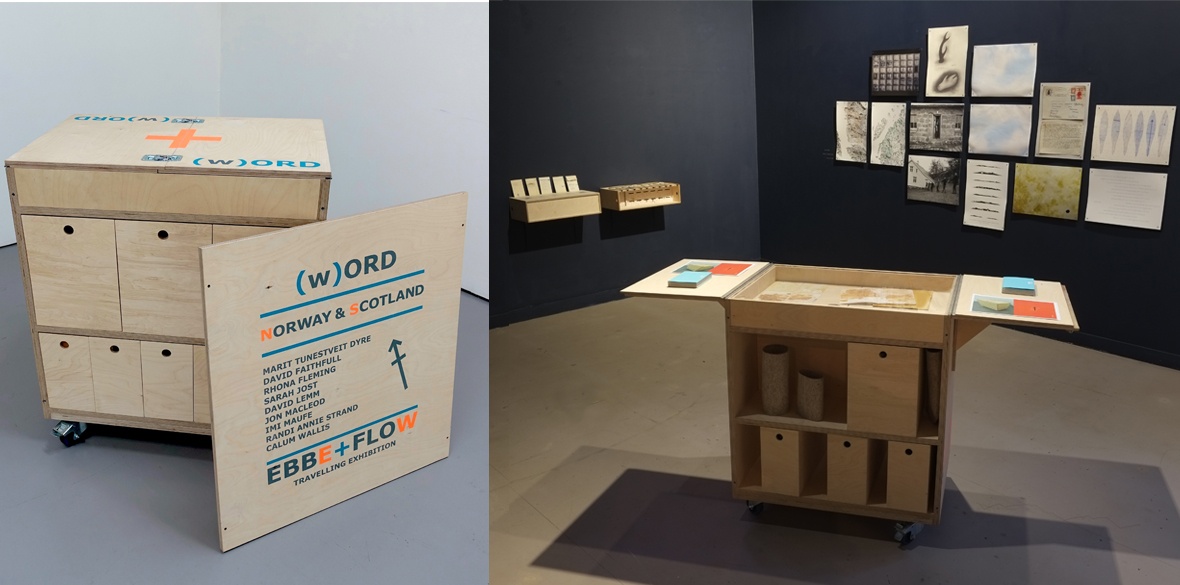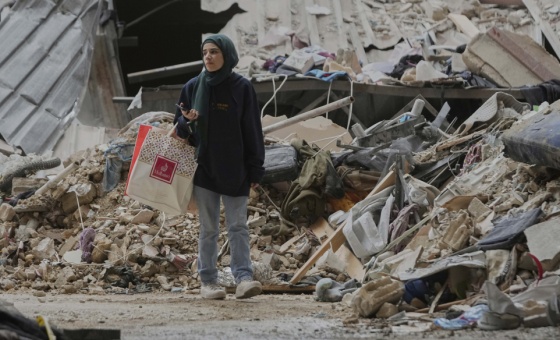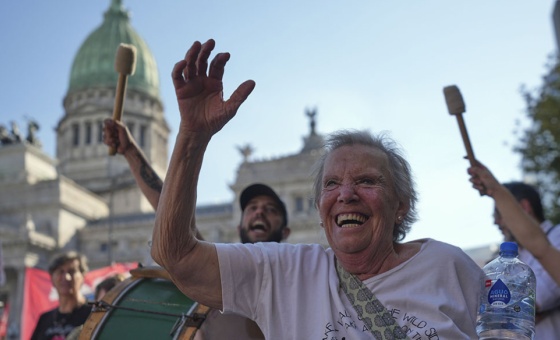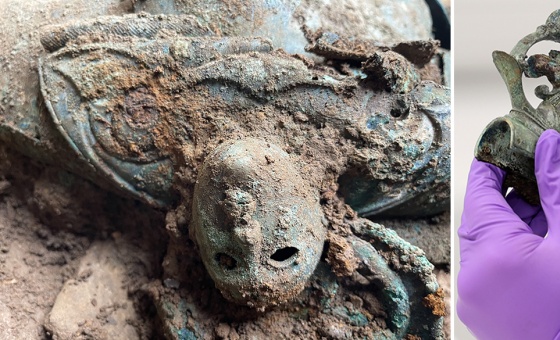This is the last article you can read this month
You can read more article this month
You can read more articles this month
Sorry your limit is up for this month
Reset on:
Please help support the Morning Star by subscribing here
TAIGH CHEARSABHAGH Museum and Arts Centre sits nestling among rocky bays and inlets on the east side of North Uist in the Outer Hebrides, far off the west coast of Scotland.
Although travelling there today may be hampered by the ongoing Calmac ferry fiasco, all kinds of vessels have navigated and serviced these island waters for centuries.
From the first neolithic settlers and Viking raiders to the herring fishing fleets of more recent times, countless generations have harvested the rich bounty of these island coastlines.
Today, the current Scandinavian offering is an exhibition entitled (w)ORD: EBBE+FLOW, and testament to more civilised times and trades.
The touring exhibition, curated by David Faithfull and Imi Maufe, is housed and transported in its own wooden chest, filled with artworks and images from nine artists from Norway and Scotland.
Currently housed at Taigh Chearsabhagh, at each new location the EBBE+FLOW box is unpacked and arranged into a different configuration, depending on the venue’s footprint and curation.
The box itself represents the universal seaman’s chest, or “kiste” in Norse and “ciste” in Gaelic.
Each artist has an individual drawer that houses their work during transport, but then acts as a presentation case in the gallery setting, the upturned drawers becoming plinths or shelves.
The exhibition captures, in its form and configuration, the essence of the drifting cultural and nautical exchanges between the two lands across the North Sea, both historically and today: the ebb and flow of tides, people, languages and objects between Norway and Scotland, following the weather and the tidal streams, back and forth, from east to west and from west to east.
The work grew out of a four-year collaborative project between the artists, conceived during two artist residencies in both countries, the first at Tormore on the Isle of Mull in 2018, and the following year in Bergen and at Tjuvika in Norway, near the site of the original Viking parliament near Gulen off the Sognefjord.
The work includes bold canvas wall coverings, delicate incised plant drawings, colourful floor installations, carved coal and cedar sculptures, prints, constructions, video works and book artefacts.
Although each artist approached the project uniquely, there are overlaps, echoes and parallels between the work. Geology, botany and the landscape are balanced with investigations into trade and industry, language and placenames, site-lines, traditions and tools.
Rhona Flemming’s wooden constructed sculptural relief references the oil and gas drilling platforms in the North Sea, while David Faithfull’s antler form is carved from Cannel coal, again linking common ancient geology and modern industry, while his carved wooden “Mitt” suggests the diver and the sea.
Calum Wallis’s delicate graphite rock studies on paper are countered with his own huge canvas banner forms, dragged across the Norwegian and Scottish landscapes, documenting the earth pigments in monumental scale.
Both David Lemm and Randi Annie Strand reference marine vessels. The former in sculpting rune-like forms from the deck fittings of cargo vessels, while the latter makes delicate carved configurations from traditional “Birlin” fjord boat forms.
Imi Maufe’s work relates to marine trade and both the valuable export of Scottish salt and the dubious trade of Scandinavian timber in past centuries.
Her accompanying bookwork is generated directly from the landscape: the metallic bog iron deposits are captured as direct monoprints on thin paper sheets.
Jon Macleod maps routes and site-lines on his intriguing squid quill forms, laser-cut and screen-printed with accompanying QR codes for additional navigation.
Mirroring the delicacy and fascination of nature, Sarah Jost’s hand-cut plant-forms document a walk from the found plants which are familiar in both country’s ecosystems, their names and identifications contrasted through language and local dialect.
Marit Tunestveit Dyre’s video performance piece enacts the rotating beam of a promontory lighthouse as she herself rotates, illuminating the gloaming landscape.
Accompanying all the individual artists’ work is a collective set of prints and an artists’ book funded by Creative Scotland.
Its contents are gathered from a diverse range of individuals involved in the project both in Norway and Scotland including geologists, Gaelic and Norse linguists, historians, seafarers and naturalists who were involved with the artists on the two residencies.
Runs at Taigh Chearsabhagh until April 29, then Grinneabhat Gallery, Lewis, in May, Shetland Museum and Archives Gallery in July and August, and Duncan of Jordanstone College of Art and Design in September.








